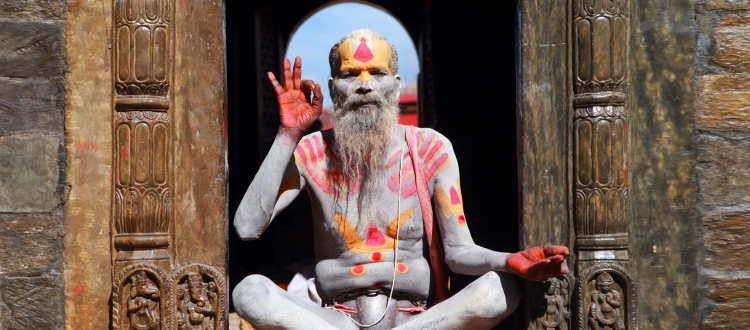Different dynasties, such as the Maurya, Satavahanas, Western Satraps, and Kushans, supported Buddhism and Jainism by building large architectural monuments such as stupas and cave complexes during their reign.
The Maurya dynasty, which existed in ancient India, was known for patronizing both Jainism and Buddhism, as well as supporting the construction of large cave complexes, stupas, and other architectural monuments. These structures were used by monastic orders during the rainy season.
After the decline of the .
About Ancient India

Ancient India is the Indian subcontinent from prehistoric times to the start of Medieval India, which is typically dated (when the term is still used) to the end of the Gupta Empire around 500 CE.
Buddhist Stupa – Kadam Chorten
The Kadam Style Stupa is distinguished by a simple but traditional top with a parasol and thirteen falling discs. A square balcony-like structure with a round bell-shaped bottom is placed in the center, all of which is above around double lotus foundation.
Kadam stupas are commonly used as reliquaries. Some include only connected articles, while others contain the ashes of a lama or other renowned person. They frequently contain numerous kinds of treasure, ranging from .
A brief introduction to Black Jambhala featuring Thangka and Statue collections
Jambhala, Black (Tibetan: dzam bha la, nag po), a wealthy deity popularized in Tibet by Bari Lotsawa and the Kashmiri teacher Shakyashri Bhadra.
Black Jambhala is known by Kubera in Hinduism. Kuber is the god of wealth. Originating in ancient India, he appeared from the river's waters and passed on the ability to generate wealth to a monarch whose realm was experiencing severe financial troubles at the time. He also helps the impoverished and those .
King of the South – Virudhaka
Virudhaka is a major deity in Buddhism. Virudhaka is a symbol of success and progress. Virudhara is the ruler of the wind. His sword is to protect Dharma and also to symbolize power over ignorance.
Virudhaka is the Guardian of the Southern Direction. Virudhaka, leader of the Kumbhanda, is a worldly guardian worshipped as a protector. He lives on the south side of the lower slopes of Mount Meru in the Heaven of the Four .
All you need to know about Yoga
Yoga is a group of physical, mental, and spiritual practices or disciplines which originated in ancient India. Yoga is one of the six astika schools of Hindu philosophical traditions. There is a broad variety of yoga schools, practices, and goals in Hinduism, Buddhism, and Jainism.
The term "Yoga" in the Western world often denotes a modern form of hatha yoga and yoga as exercise, consisting largely of the postures or asanas.
Origin of Yoga
The word Yoga .
Interpreting Parnashavari – Goddess of Natural Healing
Parnashavari is also known as the goddess who protects from a contagious illness. Parnashavari is a Hindu deity adopted as a Buddhist deity of diseases, worship of which is believed to offer effective protection against outbreaks of epidemics.
Parnashavari is called the Mountain Ascetic Wearing Leaves in English. Parnashavari is also known as ri tro ma, lo ma gyun ma in Tibet.
The iconography of the Parnashavari
Parnashavari is a natural who is yellow in color. Parnashavari .
Depicting the Painting of Machik Labdron and Chod Refuge
This is mid-20th-century painting of Machik Labdron and the Chod refuge field displaying teachers and deities.
Thangka Painting Chart
Depicting the Painting of Machik Labdron and Chod Refuge
N°1 Asanga
Asaṅga was "one of the most important spiritual figures" of Mahayana Buddhism and the "founder of the Yogacara school".
Traditionally, he and his half-brother Vasubandhu are regarded as the major classical Indian Sanskrit exponents of Mahayana Abhidharma, Vijñanavada (awareness only) thought and Mahayana teachings on the .
Who is Padmasambhava?
For 2,500 years Buddhists have considered with awe the achievement of Siddhartha Gautama. What induces such tremendous respect in them is not just that he gained Enlightenment, but that he did so without a teacher. Contemplating the difficulties that the Buddha had to overcome has given Buddhism a very great appreciation of the value of a spiritual teacher.
As Buddhism developed, and the three yanas unfolded, the role and significance of the spiritual teacher changed. .
Postures of Buddha – Standing, Sitting, Sleeping
Posture is the position of the Buddha in which Buddha holds his body when standing, sitting,walking, running and sleeping.
According to the modern practice there are two kinds of posture to hold your body. Dynamic posture and static posture.
Dynamic posture is how you hold yourself when you are moving, like when you are walking, running, or bending over to pick up something.
Static posture is how you hold yourself when you are not moving, like when you are .
Top 10 Composition of Pigments in the Tibetan paintings
The application of colour to the thangka canvas involved two main steps first, filling in the areas of different base colours, and second, the subsequent shading and outlining of those areas.
To these steps there corresponded the two essentially different types of paint in the Tibetan palette
Mineral pigments (rdo tshon and sa tshon) and
The organic dyes or lakes (tshos)
The mineral pigments had to be mixed with a binder before being applied as paints. .




















